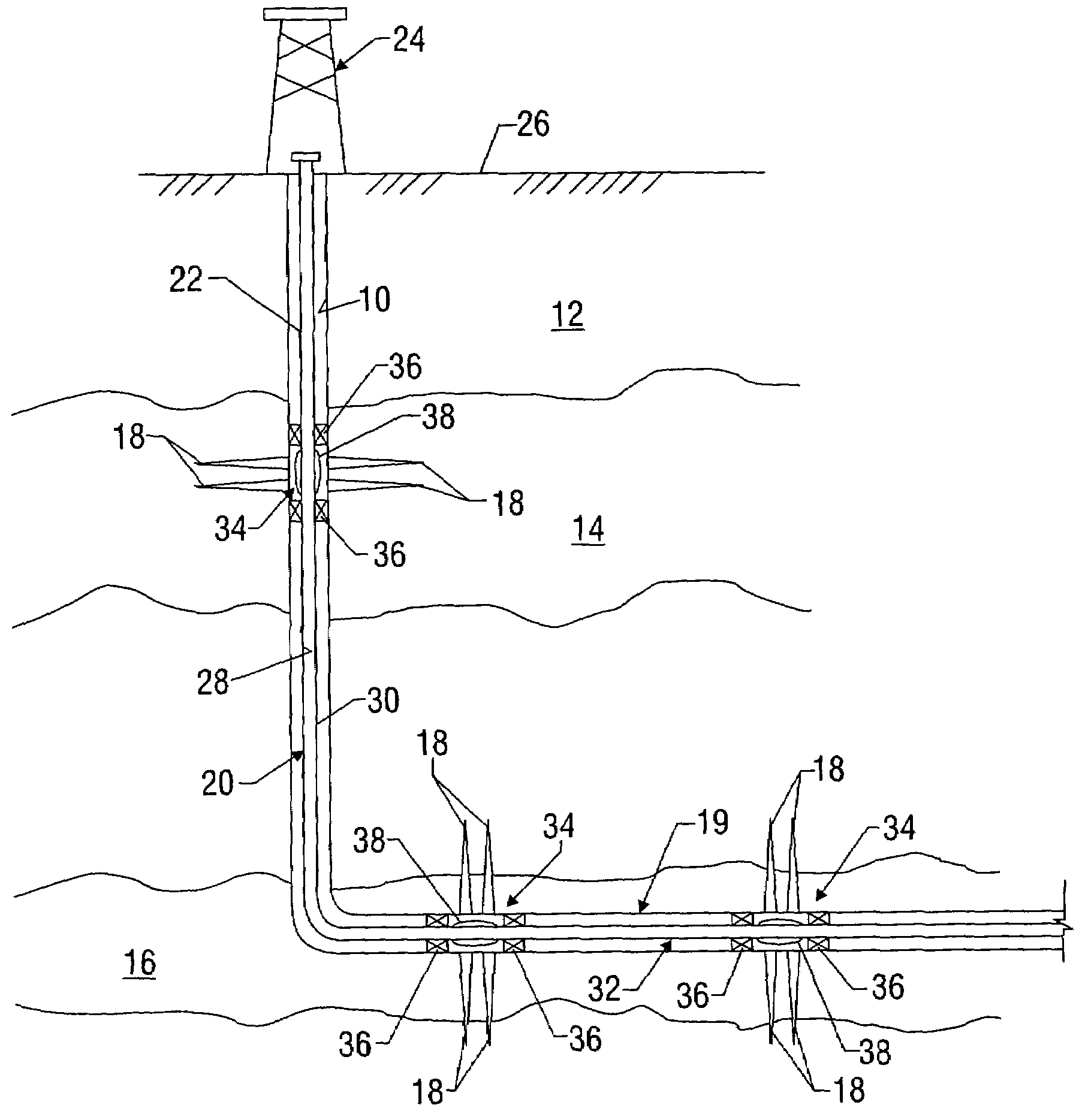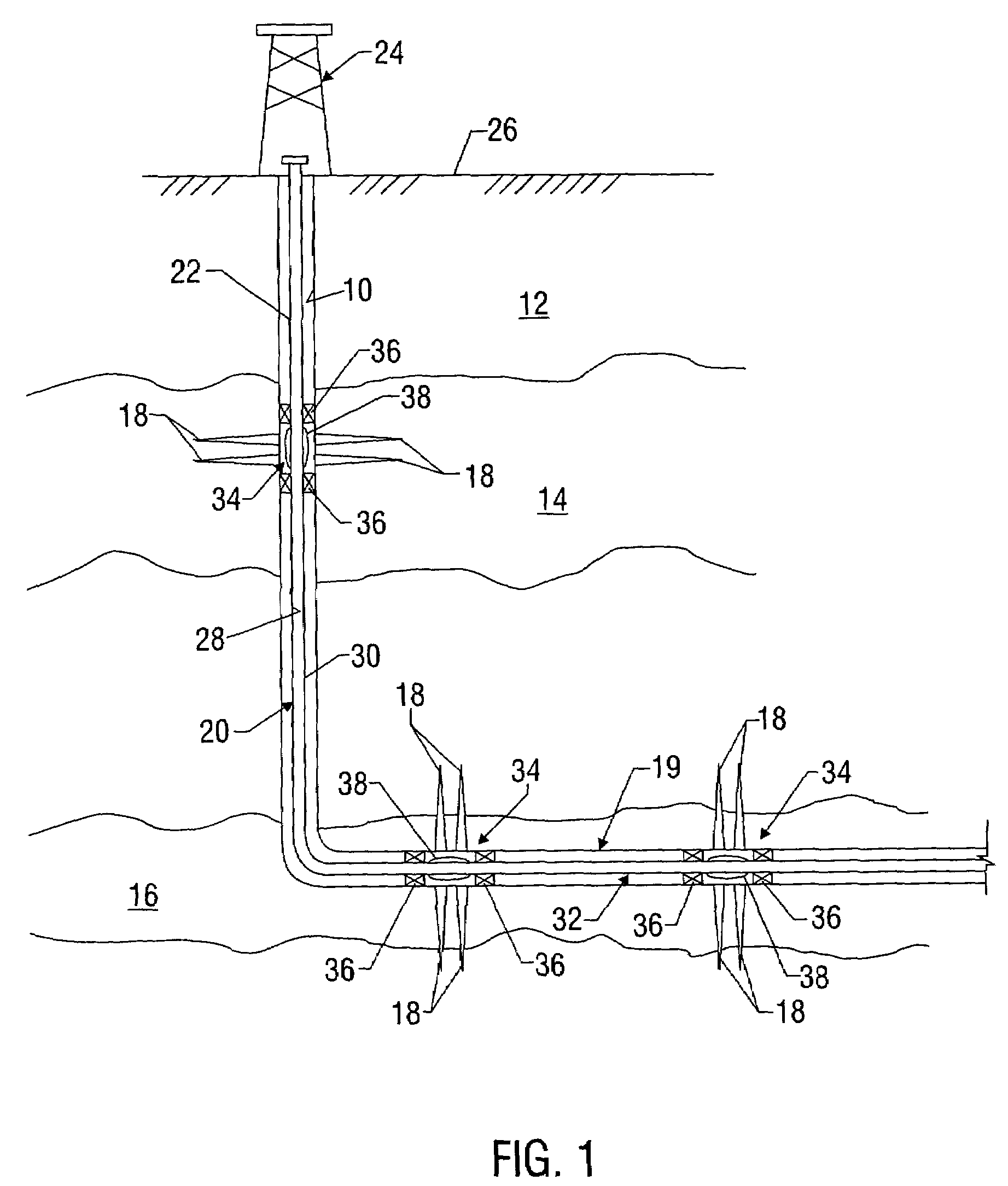Inflow control device with passive shut-off feature
a control device and inflow technology, applied in survey, borehole/well accessories, construction, etc., can solve the problems of reducing the profit of production, accelerating the inclination of the opening, and nearby gas being drawn down or drawn up into the production tubing at a faster rate, so as to reduce the gas flow
- Summary
- Abstract
- Description
- Claims
- Application Information
AI Technical Summary
Benefits of technology
Problems solved by technology
Method used
Image
Examples
Embodiment Construction
[0025]The present invention relates to devices and methods for controlling production of a hydrocarbon producing well. The present invention is susceptible to embodiments of different forms. There are shown in the drawings, and herein will be described in detail, specific embodiments of the present invention with the understanding that the present disclosure is to be considered an exemplification of the principles of the invention, and is not intended to limit the invention to that illustrated and described herein.
[0026]Referring initially to FIG. 1, there is shown an exemplary wellbore 10 that has been drilled through the earth 12 and into a pair of formations 14, 16 from which it is desired to produce hydrocarbons. The wellbore 10 is cased by metal casing, as is known in the art, and a number of perforations 18 penetrate and extend into the formations 14,16 so that production fluids may flow from the formations 14, 16 into the wellbore 10. The wellbore 10 has a deviated, or substa...
PUM
 Login to View More
Login to View More Abstract
Description
Claims
Application Information
 Login to View More
Login to View More - R&D
- Intellectual Property
- Life Sciences
- Materials
- Tech Scout
- Unparalleled Data Quality
- Higher Quality Content
- 60% Fewer Hallucinations
Browse by: Latest US Patents, China's latest patents, Technical Efficacy Thesaurus, Application Domain, Technology Topic, Popular Technical Reports.
© 2025 PatSnap. All rights reserved.Legal|Privacy policy|Modern Slavery Act Transparency Statement|Sitemap|About US| Contact US: help@patsnap.com



